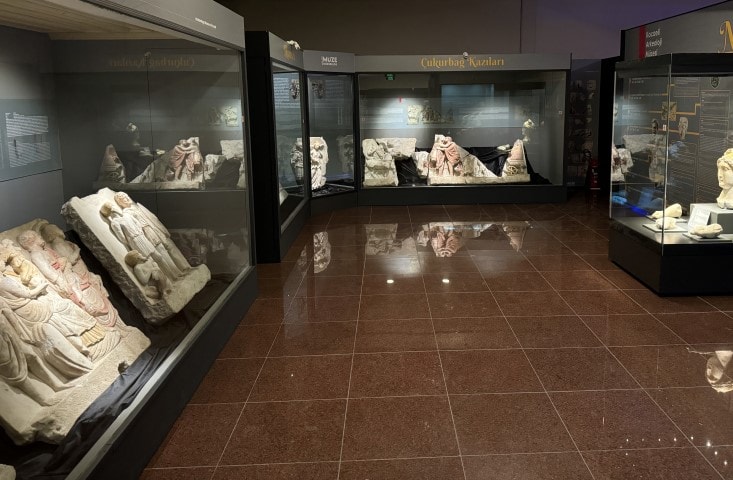
Relief depicting the embrace of Roman emperors Diocletian and Maximianus opens to the public for the first time
After 23 years of work, the relief depicting the embrace scene of Roman emperors Diocletianus and Maximianus was opened to visitors for the first time at the Kocaeli Archaeology Museum.
After the 1999 Marmara Earthquake, a relief depicting the scene in which Roman Emperors Diocletianus and Maximianus got off the chariot and embraced each other during the parade at the entrance to the city was found during the rescue excavations initiated by the Kocaeli Museum Directorate in 2001 upon the discovery of archaeological materials under and around a building damaged in the Çukurbağ Neighborhood in Izmit district.
Museum archaeologists also uncovered 8 relief panels, 2 statues and 12 pieces of statues during the excavations.

The relief depicting the embrace scene of Roman Emperors Diocletianus and Maximianus was restored by bringing together 10 separate broken pieces.
The restored relief was presented to history and art lovers after 23 years.

Serkan Gedük, Branch Manager of the General Directorate of Cultural Assets and Museums of the Ministry of Culture and Tourism, explained that the restored work depicts the imperial procession approaching from both sides, Gedük said, “Emperor Diocletianus on the left and Emperor Maximianus on the right are one of the scenes depicting the adventus, the parade at the entrance to the city. We see that both emperors are depicted in flamboyant clothing with belts, sleeves, tunics decorated with gold bands, trousers and tasseled imperial cloaks. Their short-cropped hair and beards are one of the most important scenes in terms of representing a typical example of 3rd century soldier emperors during the Roman period.”

Referring to the fact that no emperor has ever been depicted so physically close in Roman art before, even with family members, Gedük said, “It is derived from the motif of the handshake of the right hands, which is a common iconographic symbol of marriage in Roman art and literature, and we can characterize it as a sign of political harmony. This panel belongs to the Tetrarchy Period. It is the oldest and most unique example of the ‘Tetrarchic embrace motif’ among the various sculptural groups used throughout the Roman Empire.”
Pointing out that they obtained a lot of information about that period from the reliefs, Gedük noted that they were able to understand from these reliefs how the chariot that Maximianus rode was used in that period and what features it was a ceremonial chariot.
Cover Photo: Tahir Turan Eroğlu/AA
You may also like
- A 1700-year-old statue of Pan unearthed during the excavations at Polyeuktos in İstanbul
- The granary was found in the ancient city of Sebaste, founded by the first Roman emperor Augustus
- Donalar Kale Kapı Rock Tomb or Donalar Rock Tomb
- Theater emerges as works continue in ancient city of Perinthos
- Urartian King Argishti’s bronze shield revealed the name of an unknown country
- The religious center of Lycia, the ancient city of Letoon
- Who were the Luwians?
- A new study brings a fresh perspective on the Anatolian origin of the Indo-European languages
- Perhaps the oldest thermal treatment center in the world, which has been in continuous use for 2000 years -Basilica Therma Roman Bath or King’s Daughter-
- The largest synagogue of the ancient world, located in the ancient city of Sardis, is being restored











Leave a Reply